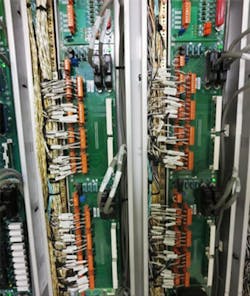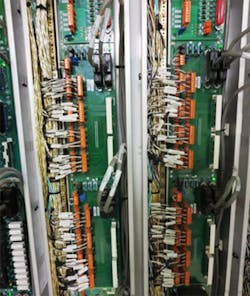Make Sure Your Industrial Control Panels are UL 508 or NEC Compliant
Article 409 [Industrial Control Panels] of the National Electrical Code (NEC) has been a part of the Code since the 2005 edition. Industrial control panels are defined in Art. 100. Basically, these panels can be any assembly of relays, pushbuttons, motor controllers, etc. Getting a listing for custom control panels is typically not reasonable due to the high cost of certification and testing for each unique panel. Therefore, there are thousands of industrial control panels built in garages and shops across the U.S. every year that aren’t UL 508 listed**.
Any time a control panel is not listed, it must comply with the requirements set forth in Art. 409. But it’s amazing how many control panel shops today aren’t even aware of Art. 409. Many times, control panels are built in small local shops that specialize in instrumentation, and they aren’t familiar with the NEC requirements.
It’s been my experience after inspecting many control panels over the past 10 years that there are a few common control panel NEC violations. These are the most common:
- Sections 409.22 and 409.110, Short Circuit Ratings and Markings — Sec. 409.110 requires extensive markings, including the short circuit rating if it contains more than just control circuit components. Since the term “control circuit components” isn’t defined, it’s up to the Authority Having Jurisdiction to ultimately decide what this term means. Applying a little bit of common sense, however, along with the definition in Art. 100 for “control circuits,” it would be reasonable to assume if the control panel includes anything other than control circuits, control relays, pushbuttons, indicator lights, etc., then it would require a marked short circuit rating. Without a doubt, if there is any sort of power for receptacles, motor controllers, breakers, fuses, overload relays, etc., the short circuit rating has to be marked on the panel. This is probably the number one non-compliant item I’ve run across.
- Section 409.104, Wiring Space and Wire Bending Space — Many times, the control panels are too small and confined to permit the required wiring space and wire bending space. This is especially true on retrofits. Most of the time, the original control panels were built “fit for the purpose,” and no future space was allowed. So any time relays or terminals need to be added, the conditions are ripe to violate this requirement.
Obviously, if you’re in the electrical industry, you should be familiar with the NEC in its entirety. But for those of us in the industrial sector who deal with control panels, having a firm understanding of Art. 409 will help ensure a safe and reliable control panel assembly.
**On a side note, UL 508 will soon be replaced by international UL Standard 60947-4-1. Prior to Jan. 26, 2012, listed control panels were evaluated to UL 60947-4, unless a customer specifically requested it be evaluated per UL 508. After Jan. 26, 2012 and up to Jan. 26, 2017, new control panel assemblies are to be evaluated to UL 60947-4 only, but revisions to existing listed control panels may be evaluated using UL 508 (if requested). After Jan. 27, 2017, all listed industrial control panels must meet UL 60947-4-1 specifications.
© 2015 Fluor Corporation. All Rights Reserved.
About the Author
Eddie Guidry
Senior Fellow
Eddie Guidry is a senior fellow with Fluor Enterprises, Inc., Sugar Land, Texas. He is highly skilled in electrical and control systems for industrial construction, design, and engineering (both domestic and abroad). The majority of Eddie’s 38 years of experience includes upstream and downstream portions of petrochemical plants and refineries. He is also heavily experienced in water and wastewater treatment facilities. Eddie is very active in the development of U.S. national (ANSI) and international codes and standards, and has been a principal member of the National Fire Protection Association (NFPA) National Electrical Code (NEC) committee since 1999 and NFPA’s National Advisory Committee on Electrical Safety Research since 2008. Eddie, who has also developed and conducted many electrical courses and seminars over the years, currently holds the corporate Master Electrician license for Fluor Corporation in the State of Texas and is also an ICC/IAEI certified electrical inspector.

